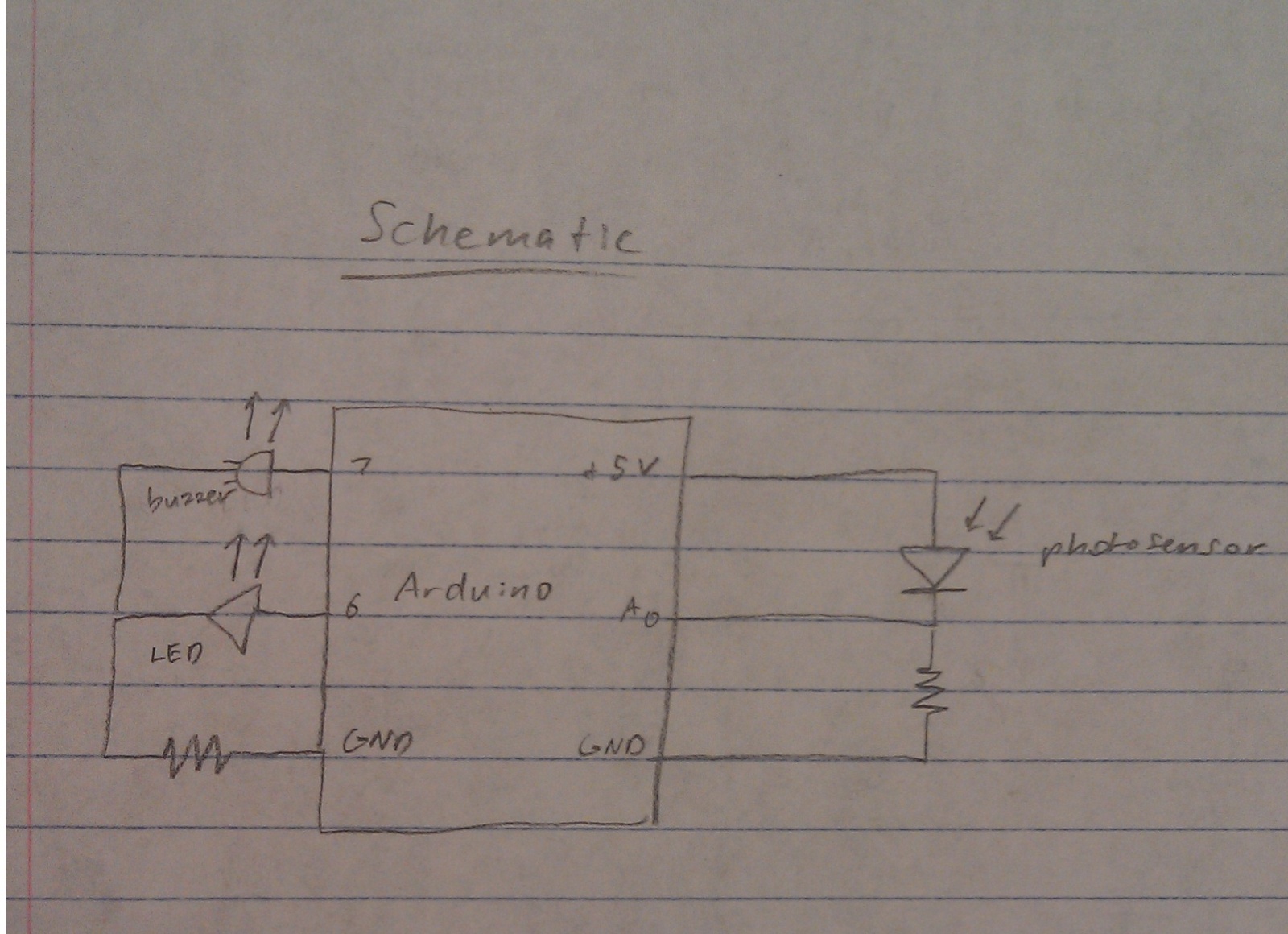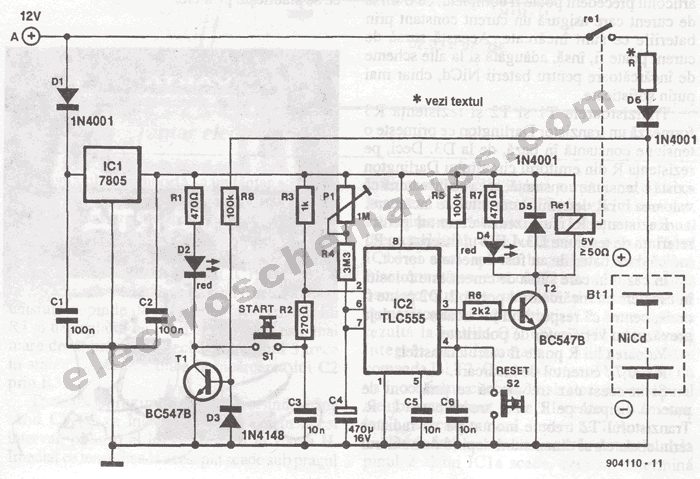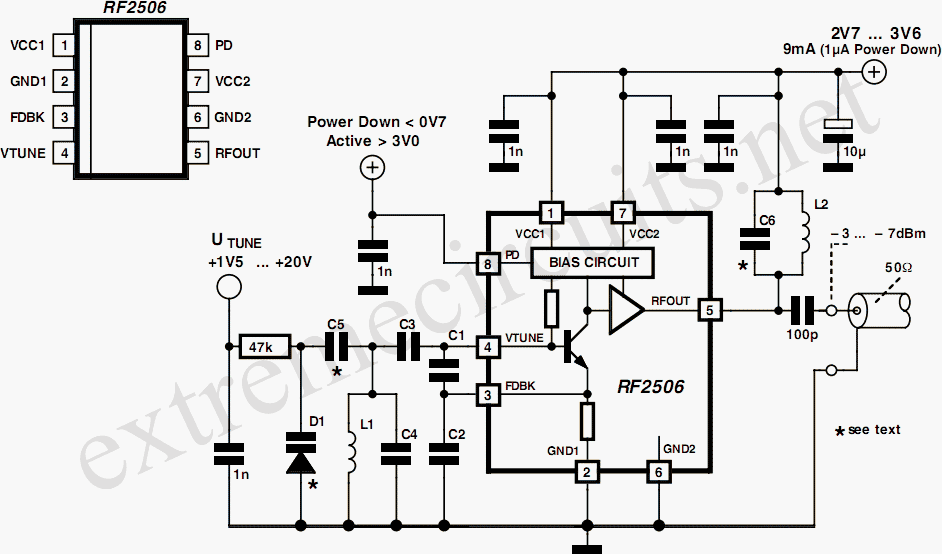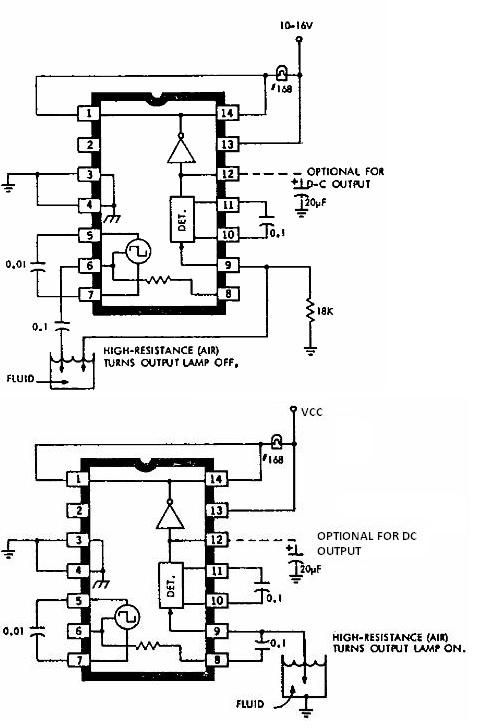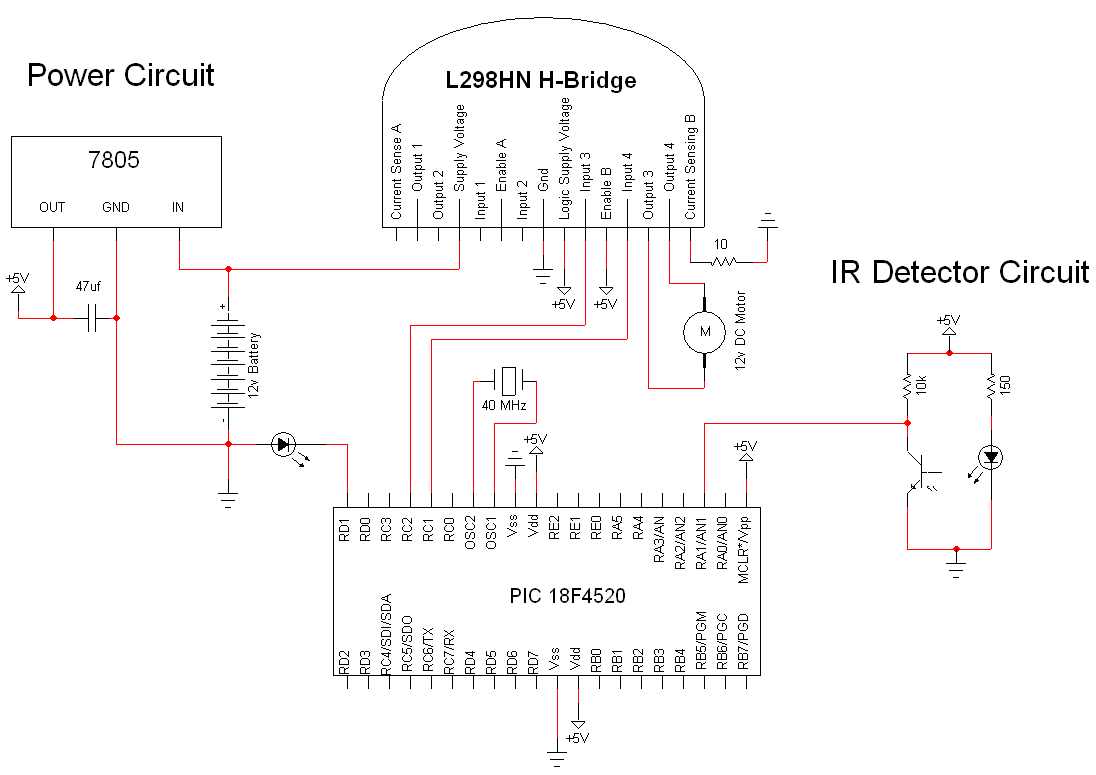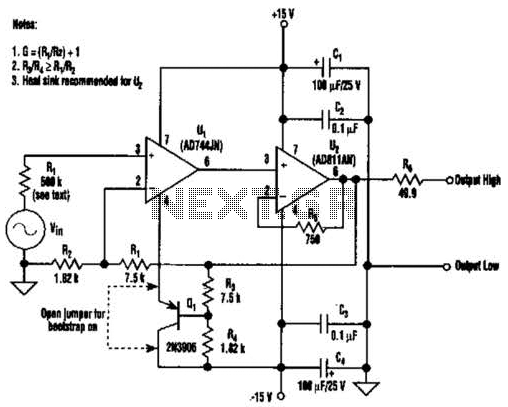
OP113 wide range of precision temperature measurement circuit
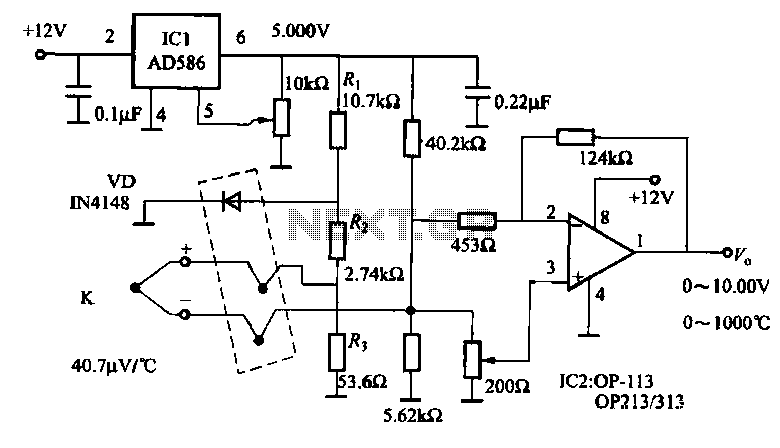
The circuit includes a K-type thermocouple cold junction compensation circuit, a precision 5.000V reference voltage source, and an OP113 operational amplifier. It is capable of measuring temperatures ranging from 0°C to 100°C with a resolution of 0.02°C. The OP113 is noted for its wide range of precision. The temperature measurement circuit is illustrated in Figure 1-18. The K thermocouple detects the temperature of the object being measured, and cold junction compensation is provided by IC1, which supplies a 5.000V reference voltage. The OP113 is characterized by low drift (maximum voltage drift of 100mV, maximum drift of 0.2mV/°C), low noise, and a wide bandwidth of 3.4MHz, functioning as a high-gain amplifier. When the temperature varies between 0°C and 100°C, the output voltage ranges from 0V to 10.000V.
The described circuit employs a K-type thermocouple, which is widely used for temperature measurement due to its broad temperature range and good accuracy. The cold junction compensation is essential for ensuring accurate readings, as it accounts for the temperature at the junction where the thermocouple connects to the measurement system. The reference voltage source provides a stable voltage that is critical for the proper functioning of the operational amplifier, ensuring that the output remains linear and precise across the temperature range.
The OP113 operational amplifier is selected for its low drift characteristics, which minimize errors in the output signal due to temperature variations and component aging. This is particularly important in precision applications where even minor drift can lead to significant measurement inaccuracies. The low noise specification of the OP113 allows for clearer signal amplification, which is vital when dealing with the small voltage outputs typical of thermocouples.
The configuration of the circuit allows for high-gain amplification of the thermocouple signal, translating small changes in temperature into a measurable voltage output. The output voltage range of 0V to 10.000V corresponds to the temperature range of 0°C to 100°C, making it suitable for various applications in industrial and laboratory settings. The bandwidth of 3.4MHz ensures that the circuit can respond quickly to changes in temperature, making it effective for dynamic temperature monitoring.
Overall, this circuit design effectively combines the K-type thermocouple with a precision reference voltage and a high-performance operational amplifier to achieve accurate and reliable temperature measurements.The circuit consists of K-type thermocouple cold junction compensation circuit, precision 5. OOOV reference voltage source and OP113 composition, can o-lOooqc to measure the temperature, the temperature resolution of 0.02cC. OP113 wide range of precision temperature measurement circuit in Figure 1-18 below. K thermocouple temperature detection object to be measured, VD, and the like cold junction compensation, IC1 provides 5.OOV reference power. OP113 low drift (maximum voltage drift lOOmV, maximum drift 0.2mV / ), low noise, wide (3. 4MHz) operational amplifier, here for high-gain amplifier, when the temperature changes within a 0 lOooqC, output voltage O ~ 10.
OOV.
The described circuit employs a K-type thermocouple, which is widely used for temperature measurement due to its broad temperature range and good accuracy. The cold junction compensation is essential for ensuring accurate readings, as it accounts for the temperature at the junction where the thermocouple connects to the measurement system. The reference voltage source provides a stable voltage that is critical for the proper functioning of the operational amplifier, ensuring that the output remains linear and precise across the temperature range.
The OP113 operational amplifier is selected for its low drift characteristics, which minimize errors in the output signal due to temperature variations and component aging. This is particularly important in precision applications where even minor drift can lead to significant measurement inaccuracies. The low noise specification of the OP113 allows for clearer signal amplification, which is vital when dealing with the small voltage outputs typical of thermocouples.
The configuration of the circuit allows for high-gain amplification of the thermocouple signal, translating small changes in temperature into a measurable voltage output. The output voltage range of 0V to 10.000V corresponds to the temperature range of 0°C to 100°C, making it suitable for various applications in industrial and laboratory settings. The bandwidth of 3.4MHz ensures that the circuit can respond quickly to changes in temperature, making it effective for dynamic temperature monitoring.
Overall, this circuit design effectively combines the K-type thermocouple with a precision reference voltage and a high-performance operational amplifier to achieve accurate and reliable temperature measurements.The circuit consists of K-type thermocouple cold junction compensation circuit, precision 5. OOOV reference voltage source and OP113 composition, can o-lOooqc to measure the temperature, the temperature resolution of 0.02cC. OP113 wide range of precision temperature measurement circuit in Figure 1-18 below. K thermocouple temperature detection object to be measured, VD, and the like cold junction compensation, IC1 provides 5.OOV reference power. OP113 low drift (maximum voltage drift lOOmV, maximum drift 0.2mV / ), low noise, wide (3. 4MHz) operational amplifier, here for high-gain amplifier, when the temperature changes within a 0 lOooqC, output voltage O ~ 10.
OOV.
